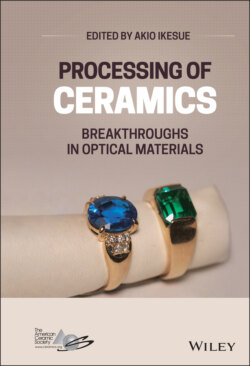Читать книгу Processing of Ceramics - Группа авторов - Страница 16
1.5 Conclusions
ОглавлениеAs mentioned above, it is a translucent ceramic pioneered by Coble in the 1950s, but the technical potential since 1995 has significantly improved since the development of ceramic laser materials. Indeed, ceramics became a paradigm of optical materials, and in the future industrial application, it is beginning to change the era from “optical single crystal to optical ceramics.” There are some technical issues, but one of them is that the crystal structure of current ceramic (polycrystalline) optics is limited to cubic system. Since the anisotropic material has birefringence, there is no possibility as an optical material from the viewpoint of the current science and technology. However, if it is possible to create true nano‐sized materials without birefringence which has never been experienced, there is the possibility of initiating the same technological innovation as cubic system ceramics. On the contrary, if it is possible to create a single crystal from compositionally homogeneous fine grains, there is also the possibility of an ideal crystal that can breakthrough an anisotropic single crystal synthesized from the conventional melt solidification method. The synthesis of laser grade ceramics by sintering method suggests the development of infinite material science in the future.
Finally, what the scientist should not forget is “What is the truth and what should we do for the future?” the authors themselves will continue to try new challenges based on this philosophy.
